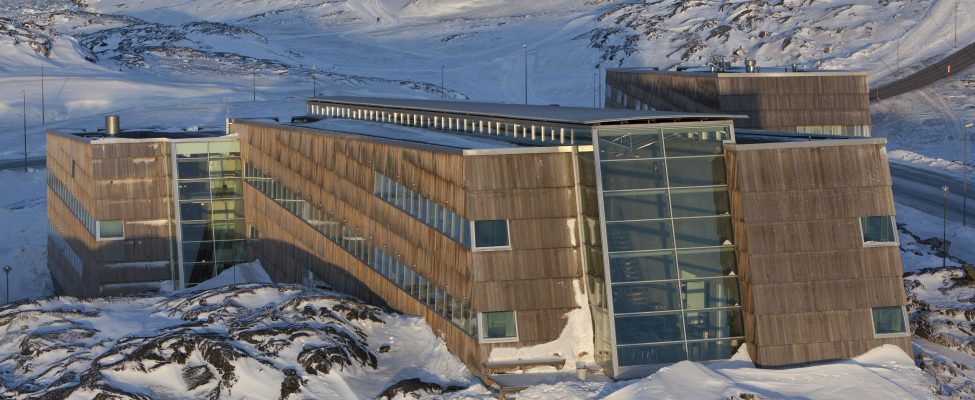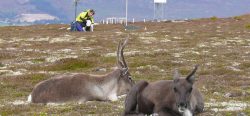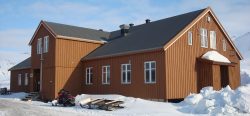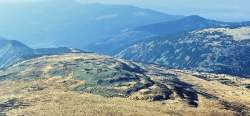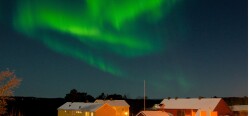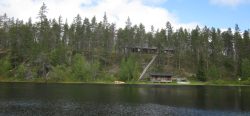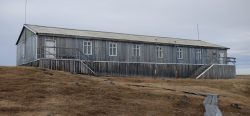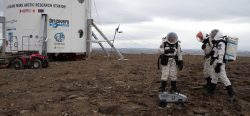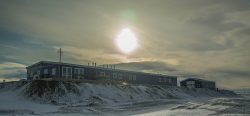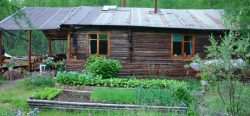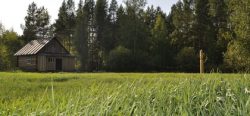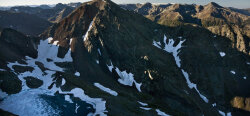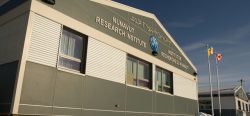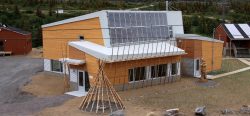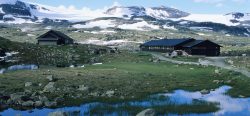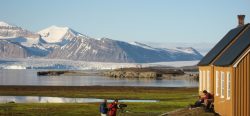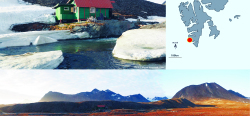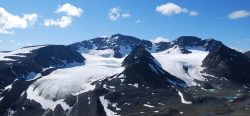Contact Details
Kivioq 2
P.O. Box 570
3900 Nuuk
Greenland
- Phone: +299 361200
- Fax: +299 361212
- Email: info@natur.gl
- Link: http://www.natur.gl
STATION NAME AND OWNER
Greenland Institute of Natural Resources is owned by the Government of Greenland.
LOCATION
The Greenland Institute of Natural Resources (GINR) with its main buildings, laboratories, and living quarters is located in Nuuk, Greenland (64°11’ N, 51°41’ W). Additional facilities include field stations in Kobbefjord, Nuuk (64°08’ N, 51°23’ W) and Niaqornat, Uummannaq (70°47’ N, 53°40’ W).
BIODIVERSITY AND NATURAL ENVIRONMENT
Nuuk and the Kobbefjord field station provide access to low arcticDefinitions of the Arctic vary according to environmental, geographical, political, cultural and scientific perspectives. Some scientists define the Arctic as areas having a high latitude, long winters, short, cool summers,... More ecosystems in West Greenland with different biotopes such as dwarf-shrub heaths, fens, grasslands, and lakes. The ecosystemAll the living organisms (including people) in an area as well as its physical environment, functioning together as a unit. An ecosystem is made up of plants, animals, microorganisms, soil,... More in Niaqornat, Uummannaq is at the border between Low and High ArcticDefinitions of the Arctic vary according to environmental, geographical, political, cultural and scientific perspectives. Some scientists define the Arctic as areas having a high latitude, long winters, short, cool summers,... More. Monitoring of a variety of parameters on vegetation, arthropods, mammals (both terrestrial and marine), birds, freshwater lakes, and the marine environment has been carried out for several years at GINR.
HISTORY AND FACILITIES
GINRs main building of c. 3000 m2 houses all facilities necessary for the Institute’s activities: offices, laboratories, deep-freeze rooms, storage rooms, conference room, and meeting rooms. Adjacent to the main building, there is an 850 m2 annex with a large multi-room used for meetings and seminars. In 2017, an additional building (1500 m2) mainly for educational purposes was inaugurated. The building includes an auditorium with 70 seats, meeting rooms, laboratory facilities. The annex and the new building houses 11 smaller apartments and eight rooms for visiting researchers. GINR has a fourth building near the city centre in Nuuk with four guest rooms for students, and visiting scientists. In addition to the buildings in Nuuk, GINR owns two field stations: one in Kobbefjord, near Nuuk and the other in Niaqornat, in the Uummannaq area in Northwest Greenland. These field stations function as bases for small research teams and accommodates four people each. GINR also owns two ships, Sanna and Pâmiut, which are used for scientific investigations in both sheltered and open waters, as well as two small boats and three aluminium dinghies. For transport on land, GINR owns three cars and two snowmobiles.
GENERAL RESEARCH AND DATABASES
Research and monitoring activities focus on living marine resources (fish, shellfish, marine mammals, and birds), land-based resources (land mammals and vegetation), as well as physical and chemical processes in the environment in relation to climate changeAccording to the United Nations Framework Convention on Climate Change, climate change is change in the climate of the whole Earth or a region of the Earth that is believed... More. Population assessments and management advice are produced and reviewed in scientific committees under various international bodies where GINR is represented. GINR also participates in the monitoring programme “Greenland EcosystemAll the living organisms (including people) in an area as well as its physical environment, functioning together as a unit. An ecosystem is made up of plants, animals, microorganisms, soil,... More Monitoring” in the High ArcticDefinitions of the Arctic vary according to environmental, geographical, political, cultural and scientific perspectives. Some scientists define the Arctic as areas having a high latitude, long winters, short, cool summers,... More at Zackenberg/Daneborg in North East Greenland and in the Low ArcticDefinitions of the Arctic vary according to environmental, geographical, political, cultural and scientific perspectives. Some scientists define the Arctic as areas having a high latitude, long winters, short, cool summers,... More at Nuuk, West Greenland. The latter is realised from GINR facilities. As an integrated part of the activities at GINR and the Greenland ClimateThe average weather we would expect over a long period of time (seasons, years, decades). Climate varies from place-to-place across the Earth. Climate is determined by long-term (over at least... More Research Centre, a long-term monitoring programme of the marine (since 2005) and terrestrial ecosystems (since 2008) is carried out. The objective is to provide long-term data series of the natural innate oscillations and plasticity of arcticDefinitions of the Arctic vary according to environmental, geographical, political, cultural and scientific perspectives. Some scientists define the Arctic as areas having a high latitude, long winters, short, cool summers,... More ecosystems. This is accomplished through monitoring of selected biotic parameters and elements (BioBasis and MarineBasis) throughout the year on a long-term basis. These sub-programmes run parallel and in close coordination with the Zackenberg Basic programme. Data from the monitoring is provided free of charge and can be accessed at www.g-e-m.dk.
HUMAN DIMENSION
GINR is located in Nuuk, the capital of Greenland, with c. 16 000 inhabitants. The Niaqornat field station is located in a small settlement (with c. 70 people) close to Uummannaq in Northwest Greenland. GINR actively communicates with users of the environment (fishermen, hunters, and recreational users) and with direct recipients of scientific advice (e.g. politicians). Users of the environment, and their comprehensive knowledge of the natural environment, are included during planning and implementation of the Institute’s activities. Fishing and hunting is part of the traditional culture and is still practised professionally and for recreational purposes.
ACCESS
Nuuk can be reached by plane either via Kangerlussuaq, West Greenland (www.airgreenland.com) or via Reykjavik, Iceland (www.airiceland.is). Transportation to the field station in Kobbefjord is by one of GINR’s own smaller boats carrying up to 12 persons. The field station in Niaqornat can be reached twice a week by helicopter from Uummannaq.
